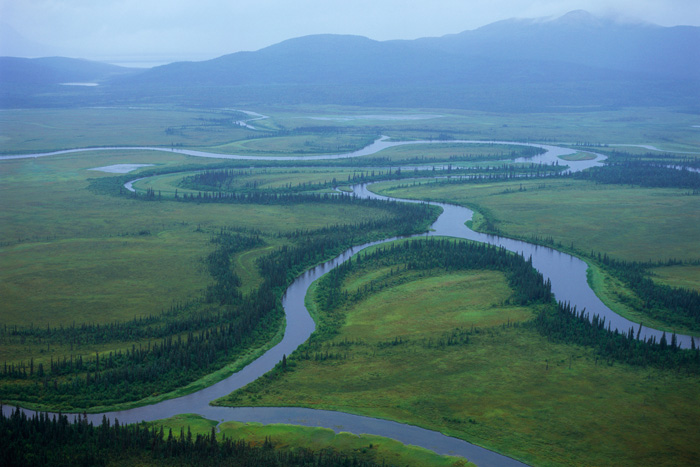
Dramatic Dam Breach Makes Mining Risks Obvious (Op-Ed)

Joel Reynolds, based in Los Angeles, is the western director and senior attorney for NRDC. This article is adapted from one that appeared on Huffington Post. Reynolds contributed this article to Live Science's Expert Voices: Op-Ed & Insights.
Three weeks ago, in the early morning of August 4, 2014, in the heart of the Fraser River watershed in central British Columbia, a major breach occurred in an earthen dam built to contain millions of tons of mining waste, called tailings, at the Mount Polley copper and gold mine. Previously pristine fishing, swimming, and summer vacation destinations like Polley Lake, Hazeltine Creek, and Quesnel Lake (including drinking water sources for the surrounding communities and residents) are now ground zero fortoxicity testing, government health warnings and clean-up — if indeed such a thing is possible.
In the disaster's wake, and even as recent tests confirm elevated levels of toxic copper and lead in aquatic life, a predictable progression is already underway.
Within days, the mine owner, the containment dam designer, and the British Columbia's Minister of Mines began to diminish the extent of the risks from, or their own role in, the massive spill of billions of gallons of contaminated wastes into surrounding, formerly pristine salmon-spawning streams and lakes. Not that bad, not my fault ... and from Mines Minister Bill Bennett, not much different than an "avalanche."
Across the border in southwest Alaska, where a long-embattled proposal is pending to build the largest gold and copper mine in North America in the headwaters of the largest wild sockeye salmon fishery in the world, the Pebble Limited Partnership moved quickly to distance its massive project from the spectacular failure at Mt. Polley. Like a ghost in the night, it quietly removed from its Youtube site a Pebble Mine TV commercial highlighting British Columbia's Fraser River copper mines — of which Mt. Polley is one — as a model of harmonious co-existence between mining and fisheries. [Huge Ponds Hold Tar Sands Sludge, and Great Risks (Op-Ed )]
Although the Partnership's spokesperson Mike Heatwole assured the media that it did so "out of deference to the people affected by this incident," there may be other more obvious, less compassionate motives for hiding a TV commercial framed around the phrase "[j]ust like the Fraser River . . . "
Maybe the commercial was deleted because the Pebble Partnership recognizes that Mt. Polley is now synonymous not with harmonious mining and fishing co-existence, but with mining and fisheries disaster.
Sign up for the Live Science daily newsletter now
Get the world’s most fascinating discoveries delivered straight to your inbox.
Or maybe the Pebble Partnership doesn't want to remind anyone that the containment dam at Mt. Polley was designed by the same company hired to design the containment dams for the Pebble Mine.

Whatever the reason, the Pebble Partnership certainly understands, in the wake of Mt. Polley's huge tailings release, that the Fraser River mines are now "way off message" for their claim that no such thing could ever happen at the Pebble Mine.
This brief video just released by NRDC, tells the story.
The Pebble Partnership made a bad decision when it hitched its massive Pebble Mine to a mining "death star" near the Fraser River — that is, a mine whose videotaped implosion has now made it synonymous with the industry's worst nightmare. It is a public-relations strategy now gone terribly wrong — a strategy built on Pebble's unquestioning faith in the ability of mining engineers to design and operate a containment pond that will contain millions of gallons (billions of tons) of wastes on a temporal scale of centuries. In the case of the failed Mt. Polley dam built in 1997, the containment lasted a mere 17 years.
While it's no surprise that Pebble now hopes to "unhitch" their Bristol Bay mega-mine from the Mt. Polley disaster, advocates for clean water can't let them get away with it. There is absolutely no reason for anyone to believe the Pebble Partnership's empty, self-serving, impossible promises that the Pebble Mine would never do to Alaska what the Mt. Polley Mine has done to British Columbia.
Follow all of the Expert Voices issues and debates — and become part of the discussion — on Facebook, Twitter and Google +. The views expressed are those of the author and do not necessarily reflect the views of the publisher. This version of the article was originally published on Live Science.









